Tuscany strawberry variety
Tuscany is a remontant variety of garden strawberries (strawberries) for universal use. It was bred by specialists of the Italian company ABZ seeds in 2011. Our heroine is a hybrid, so the seed bag must be marked F1. Having appeared on the market, Tuscany made a splash - it not only has decent productive and consumer characteristics, but is also very decorative.
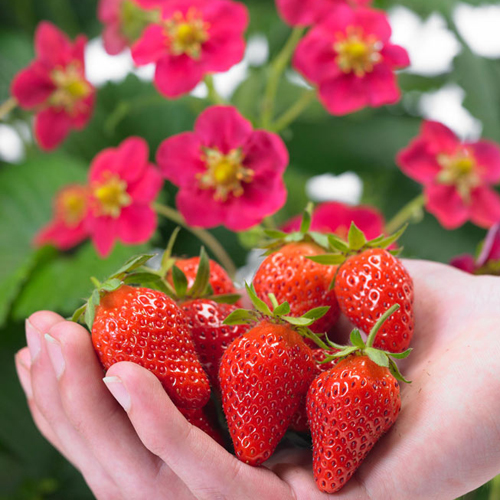
The plant is powerful, undersized, stocky, reaches a height of no more than 15-20 cm, in width grows to 40-45 cm. Strawberry maneuver is moderate. Leaves are leathery, dark green in color, shiny. The flowers are bisexual, rather large, bright pink with a ruby tint, which adds charm to our heroine and makes gardeners pay attention to her. Peduncles are long, even very, many-flowered, lodging. The variety is remontant, bears fruit on unrooted outlets of the current year. In general, the plant looks very decorative, it can even be used as a ground cover crop, while a strawberry meadow, strewn with pink flowers and red berries, will look very interesting. Also, an excellent solution would be to use Tuscany in an ampelous version.
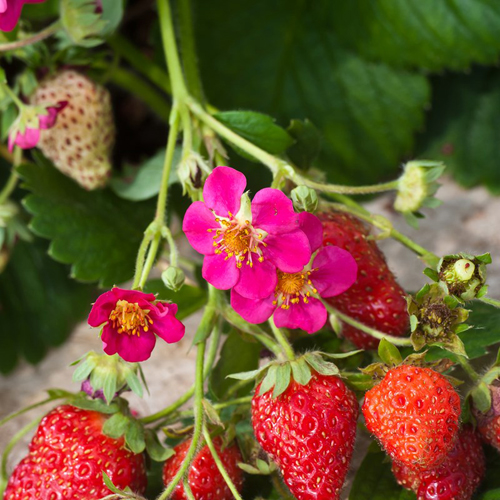
Strawberries of medium and small sizes, conical elongated, are described in some sources as drop-shaped, with a neck, rather uniform in the total mass. The skin is bright red, shiny, at the stage of full ripeness it acquires a dark scarlet hue. Achenes yellow, shallowly depressed. The pulp is red, very dense, but not firm, juicy, with a pronounced aroma of wild strawberries.
The variety has excellent taste, the berries are very sweet, but not sugary, with a subtle hint of sourness. The fruits are versatile in use, excellent for processing, jam is especially good from them, and, of course, they are great fresh. The density of the pulp is quite enough so as not to be afraid for the harvest during transportation, however, Tuscany is hardly suitable for commercial cultivation in order to sell fresh produce to the market. Nowadays, when customers are used to seeing large berries on the counter, our heroine, most likely, will not be able to impress them with her rather small fruits. In general, there is very little information about the commercial cultivation of this strawberry, and many sources report that it is mainly used as an ornamental one.
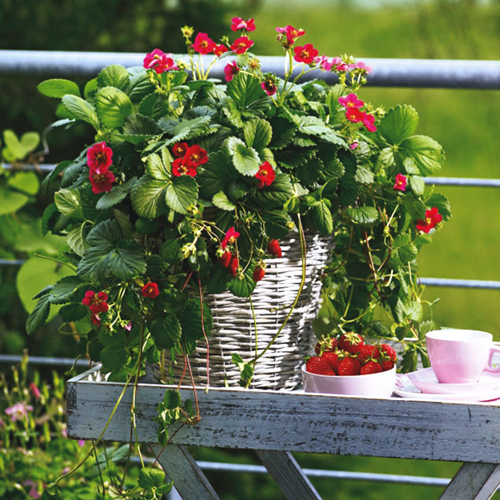
The average weight of berries in the season is not particularly impressive - only 18 grams, and gardeners note that this weight can be called the maximum, and the average will be even less. Of course, against the background of large-fruited varieties, this variety looks rather modest, but again it should be said that initially Tuscany was bred as an ornamental variety and is positioned by the originators just as a strawberry with beautiful flowers, while also giving a good tasty harvest for a long time (since June to late autumn). By the way, the productivity of our heroine is quite decent - up to 1 kg of fruit per bush. Of course, according to gardeners, such results are not particularly achievable, so it is more expedient to talk about the yield at the level of 500-700 grams of berries per plant. Gardeners almost unanimously came to the opinion that Tuscany is not suitable for growing in order to obtain berries, for this it is better to purchase another variety, but our heroine is perfect for decorating a summer cottage or premises.
The hybrid has excellent immunity, it staunchly resists various diseases of a fungal nature, in particular root rot and spots.It is also quite winter-hardy, hibernates without problems in Central Russia, but it is still highly desirable to take care of covering materials, since the Italian Tuscany is still more accustomed to a mild warm climate. Strawberries have good drought and heat resistance, they feel quite comfortable in the southern regions with hot summers, but regular watering and shading will obviously not be superfluous.
In agricultural technology, the variety is, in principle, very simple, but it rather depends on the purpose for which you grow it. If you want to get a good harvest, then you need to pay sufficient attention to the hybrid and provide it with competent regular care. If Tuscany is used as an ornamental plant, then it will forgive you minor agronomic mistakes, and in general it will not demand much. The only subtlety in care in this case is that in order for the flowers to color better, it is recommended to feed the strawberries with large doses of potash fertilizers, and also to maintain the air humidity at a high level. With growing for the purpose of obtaining berries, the situation is more complicated, not in all regions our heroine will please with the harvest, and, according to gardeners, it is quite difficult to find a "key" for her.
Tuscany is a very interesting variety that clearly deserves a spot in your collection. Let us remind once again that the main sphere of its use is landscape design, decoration of premises, and the like. If you need a high-yielding strawberry for berry production, then our heroine is not the best option. But at the summer cottage, it will look great, and even delight you with a delicious harvest. Since this is a hybrid, it must be grown from seeds; you are unlikely to find seedlings on sale, except from private owners. Be extremely careful when buying seed material, so as not to fall for deception, purchase only from trusted sellers. By the way, Tuscany reproduces well with a mustache and dividing the bush, so further breeding of plants grown from seeds will not be difficult.




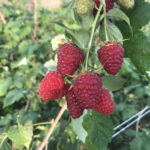
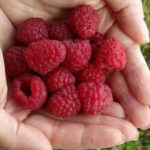



Tuscany is a really beautiful hybrid with semi-double, deep red and pinkish red flowers. Mustache gives little, so it can be successfully used in landscape design.
It is weakly resistant to spotting; there can be no question of productivity. All decorative flowering varieties are, first of all, an aesthetic pleasure! Breeders are trying, marketers are promoting the news that they have finally managed to get big tasty berries.
For example, as in the case of Ruby Ann. But in fact, a handful of medium and small, usual to taste, gnarled berries. You can eat them, but if there are no other, really tasty varieties.